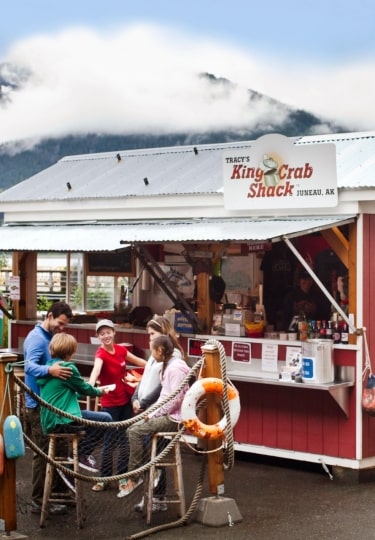For gourmands, there may be few better places in the world to enjoy fresh fish and shellfish. Not only is the best seafood in Alaska incredibly delicious, but it’s also some of the most sustainable available anywhere.
As a direct result of decades of careful regulation and a highly transparent supply chain, diners can feel good about eating wild Alaskan salmon, halibut, scallops, and other locally caught species.
Chefs at restaurants all over Alaska know exactly what to do with these top-quality ingredients. From tasting menus at fine dining restaurants to humble establishments serving fish and chips on picnic benches, there are all sorts of ways to enjoy Neptune’s bounty here. These are just a few of the local fish and shellfish to keep an eye out for on your next trip to Alaska.
Salmon

Salmon
Wild Alaskan salmon is often heralded as one of the great success stories of sustainable fishing.
While the quality and environmental impact of farmed salmon varies enormously depending on where it’s from, diners can rest assured that wild Alaskan salmon is some of the most responsibly harvested, not to mention one of the healthiest, fish on the planet.
It also happens to be incredibly delicious, with a rich, complex flavor profile that farmed fish simply cannot match.
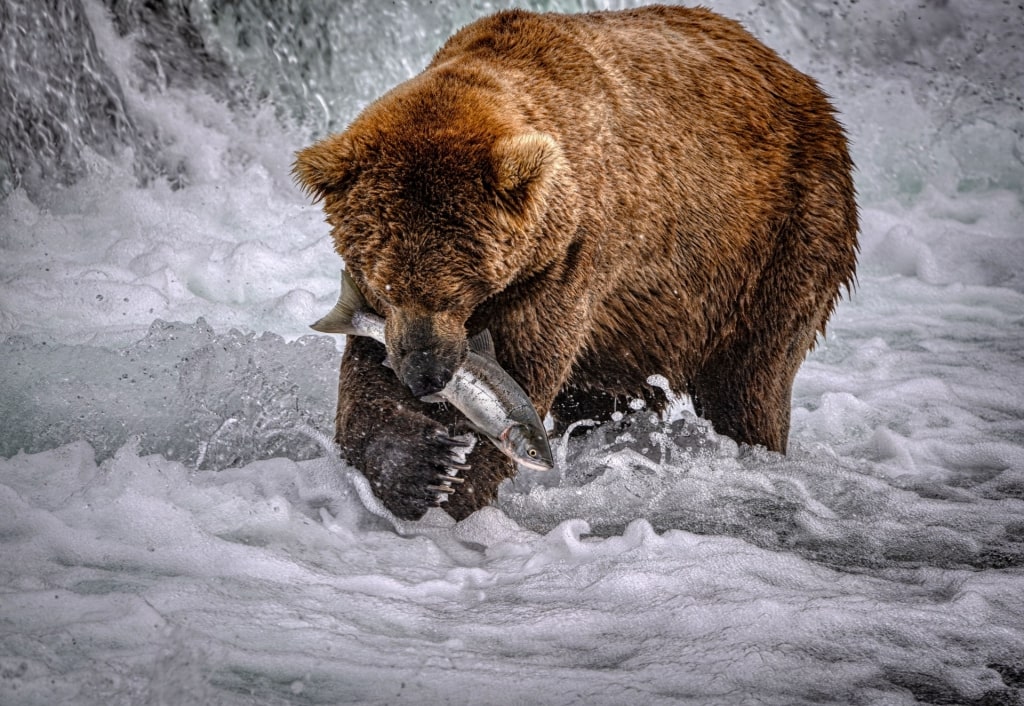
Bear
Salmon has long been a cornerstone of the food chain for many animals in Alaska. Both black and brown bears depend on it to fatten up enough to survive the long winters, while eagles and other birds of prey can often be seen hunting for it.
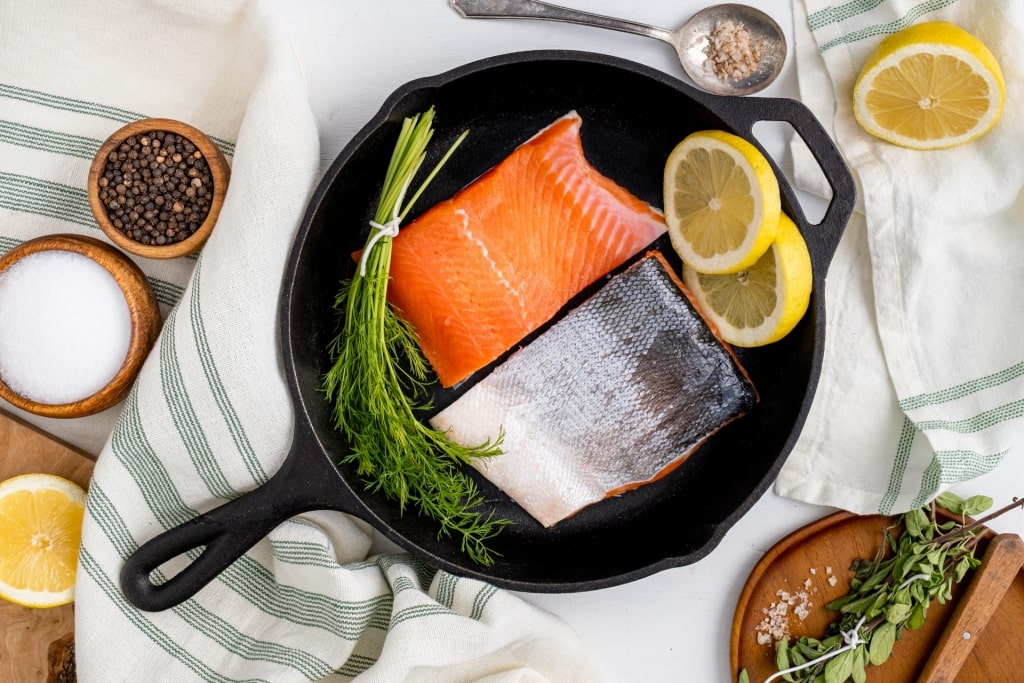
Coho salmon
For thousands of years before European colonists arrived on these shores, Indigenous Nations throughout the state hunted and cured these fish to sustain them when other food supplies grew scarce.
The town of Ketchikan actually bills itself “Salmon Capital of the World” and watching thousands of fish forcing their way upstream in the rivers here during the salmon runs is fascinating.
The term “Alaskan salmon” actually encompasses several species, all of which have distinctive characteristics. King, or Chinook, salmon, is both the largest and most sought-after variety, thanks to its silky, buttery flesh loaded with healthy omega-3 fatty acids.
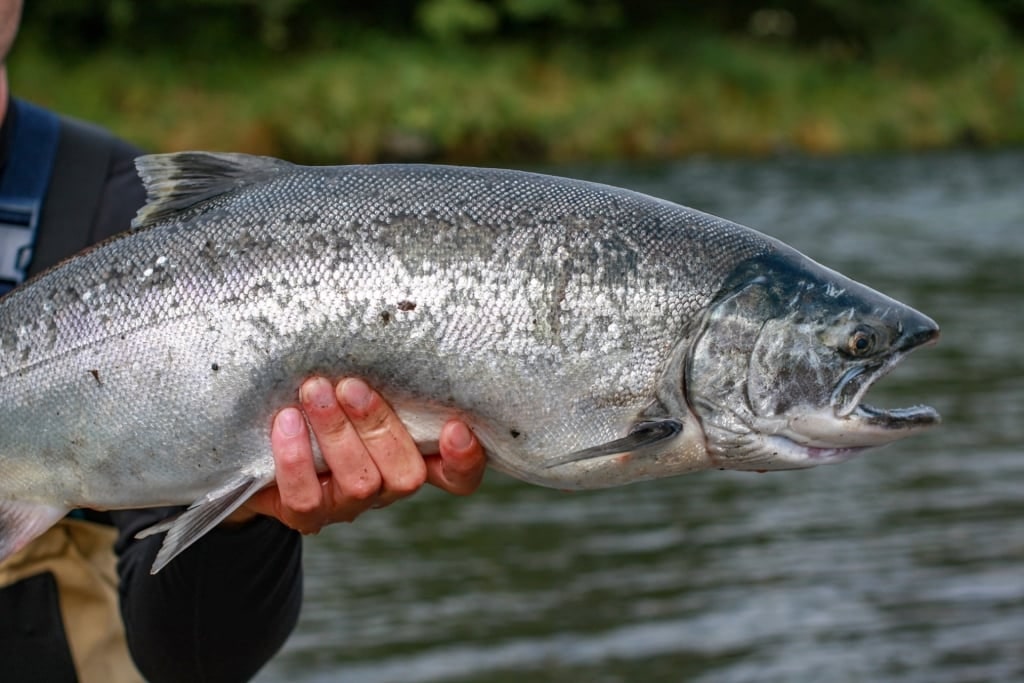
Coho salmon
Coho salmon is slightly milder in flavor, but still fantastic, and a little bit leaner. Sockeye salmon, meanwhile, has the most pronounced taste and lean, firm flesh with a shocking shade of pinkish red.
As one of the most versatile fish in the sea, there’s almost nothing wild salmon can’t do. It’s terrific raw, grilled, seared, poached, hot-smoked on a fragrant cedar plank, cured into gravlax, or cold-smoked and thinly sliced.
You can buy vacuum-packed salmon to take home from most towns in Alaska—and in places like Juneau, you can also join a local fishing expert to try and catch your own.
Halibut
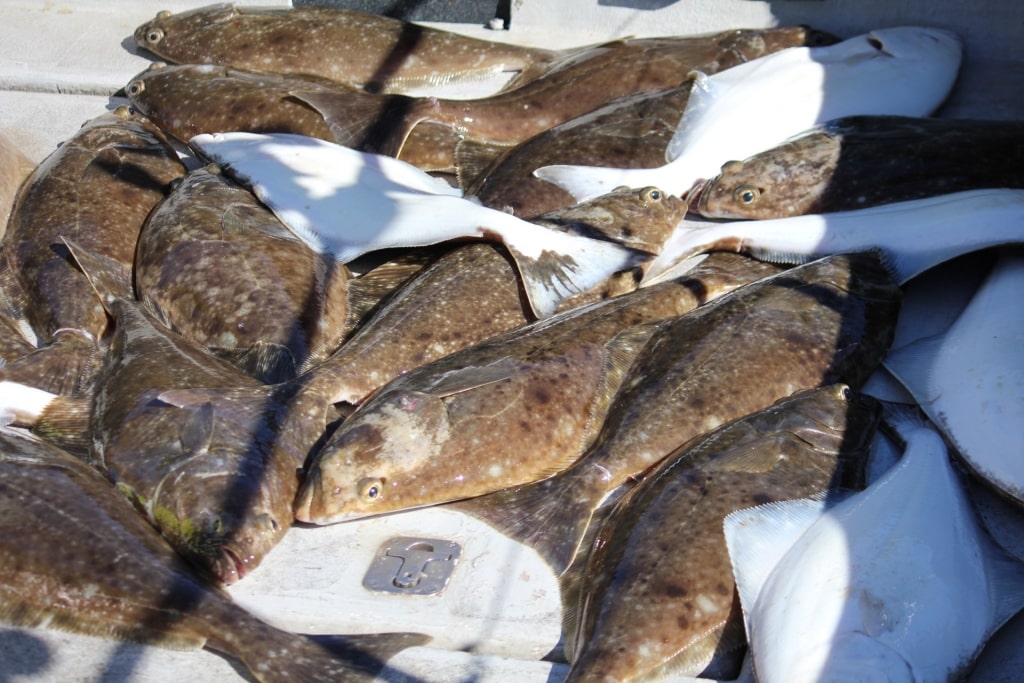
Halibut
While wild Alaskan salmon may command the most attention, halibut is a close second—particularly among chefs at high-end restaurants throughout the United States.
The Pacific halibut bears the distinction of being the largest species of flatfish on the planet. These remarkable creatures can live for over half a century and grow to a whopping eight feet long. True behemoths can weigh up to 500 pounds.
Although fishermen can catch these deep-sea swimmers in several locations, they are most plentiful in the Central Gulf of Alaska. As a result, Alaska is one of the few places in the world where it’s possible to try this delicacy fresh and only a day or two out of the water.
You can join a halibut fishing expedition from Icy Strait Point, too, whatever your level of experience—and any fishing trip here is a great chance to spot whales, too.
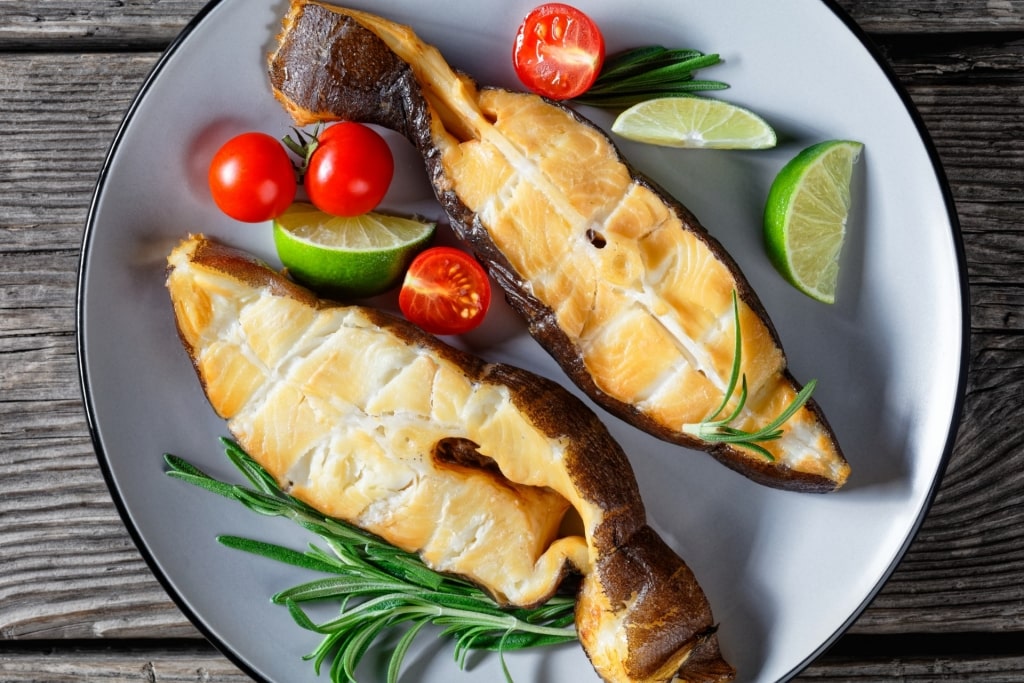
Halibut
For the uninitiated, wild Alaskan halibut has a flavor profile and texture similar to a meatier version of seabass, which is what makes it some of the best seafood in Alaska. It has firm, clean, white flesh that grills, sears, or poaches beautifully, making it a good choice for all sorts of preparations.
In Alaska, many chefs use halibut for a superlative version of fish and chips. A halibut filet fries up greaseless, flaky, and perfectly tender.
Many chefs use it as a more sustainable alternative to Chilean sea bass (also known as Patagonian toothfish), which was overfished in the 1990s and early 2000s. Thanks to years of careful regulation by the Alaskan government and fishing industries, wild halibut populations are reasonably healthy and environmentalists consider it a responsible seafood choice.
Alaskan King Crab
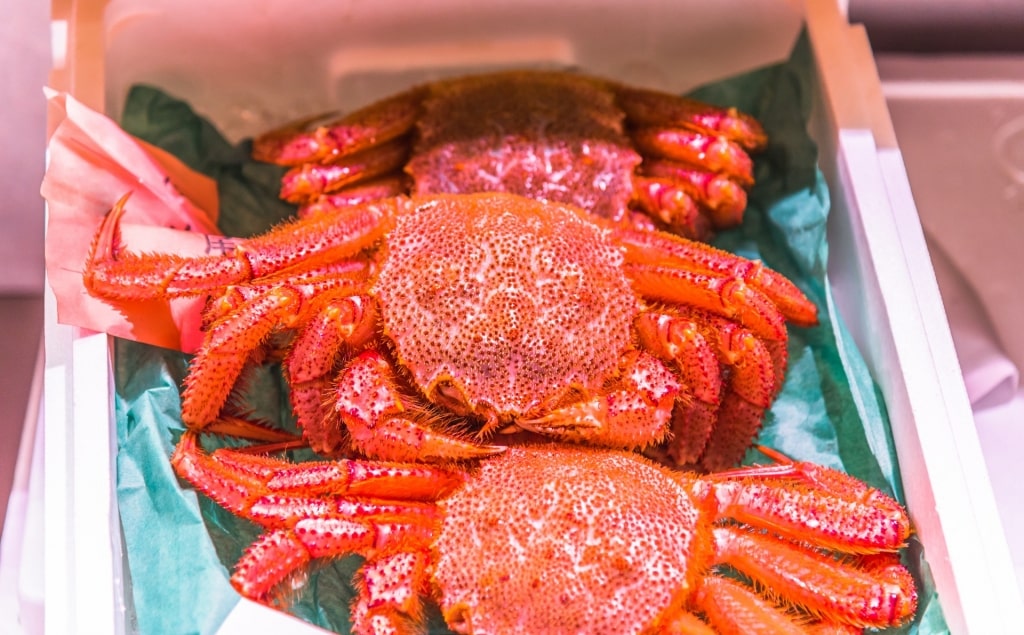
Alaskan king crab
There’s a reason they call this crab “king.” The Alaskan king crab, also known as the red king crab, is among one of the most prized crustaceans in the world.
These undersea giants, which thrive in the icy waters of the North Pacific Ocean, can grow to nearly six feet in length. Once cracked open, their immense legs and claws contain some of the sweetest meat imaginable.
While king crab legs are delicious in all sorts of preparations, this is one delicacy that doesn’t need much adornment. It’s most often served the simplest way here: in a giant bucket, with a side of butter for dipping and a wedge of lemon.
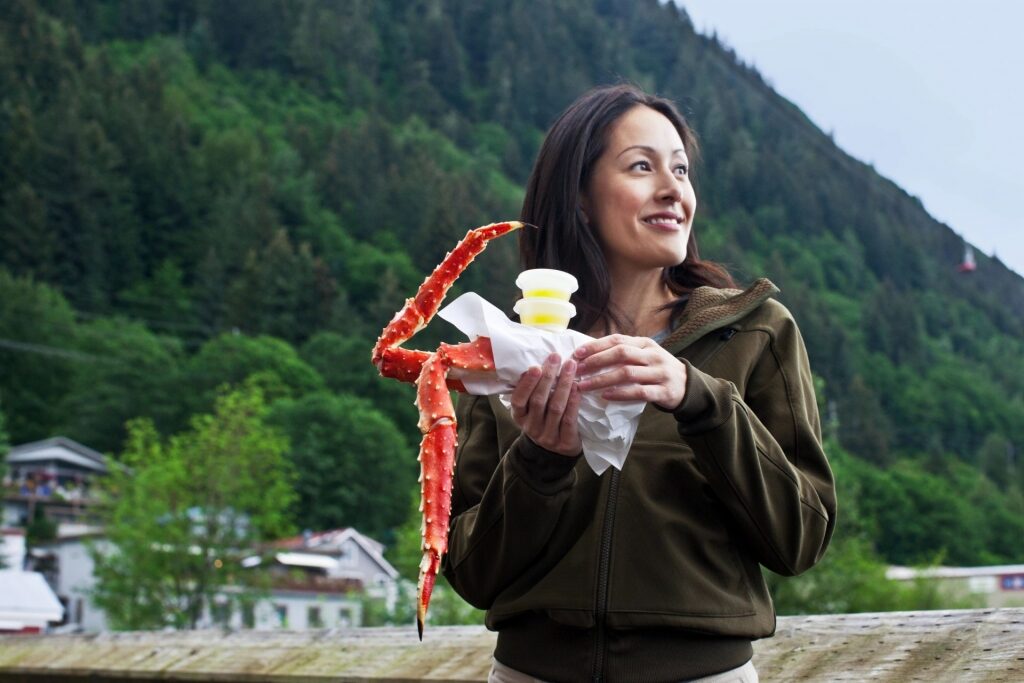
Tracy’s King Crab Shack, Juneau
Plenty of Alaskan seafood restaurants serve king crab legs, although some, like Tracy’s King Crab Shack in Juneau, are especially famous for it.
King crab fishing is one of the most grueling, dangerous professions in the United States. During crab season, boat workers typically pull long hours in icy waters. Secondly, these enormous crustaceans have been heavily overfished in most places since the 1980s.
Alaska is one of the only places that maintains high standards of transparency in their crab fishing practices. Thanks to decades of careful management, Alaskan king crab populations are now more stable.
Dungeness Crab
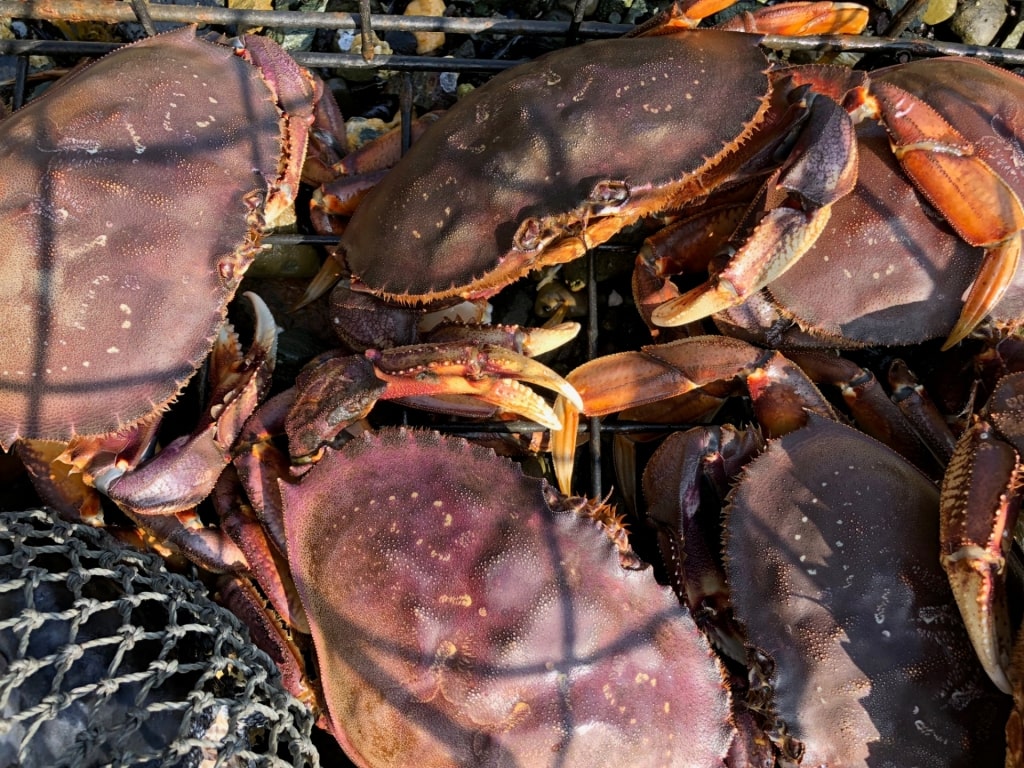
Dungeness crab
While Alaskan king crab is undeniably delicious, its sky-high prices make it a rare treat for most diners. For many, Dungeness crab makes for a terrific, comparatively affordable option.
To be clear, Dungeness crab is still a real luxury and absolutely worthy of a special occasion. Compared to Alaskan king crab legs, Dungeness crab legs have slightly less meat, but they’re still excellent eating for a fraction of the price.
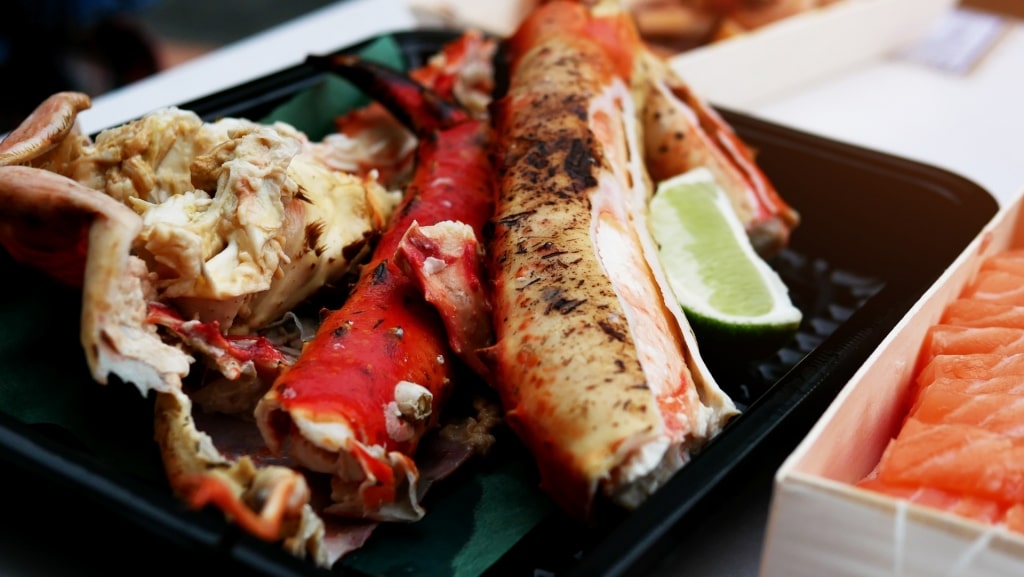
Dungeness crab
Much like their larger relatives, Dungeness crabs deserve to be the star of the show on absolutely any dinner table. One of these whole, steamed crabs would be equally at home as the centerpiece of a Cantonese banquet or a rustic American-style crab shack.
Perhaps most importantly, Dungeness crab supplies are much more plentiful than those of Alaskan king crab. Seafood Watch has labeled this crustacean a “good alternative” to more overfished species, meaning you can wolf down these crab legs with a clean conscience.
Black Cod
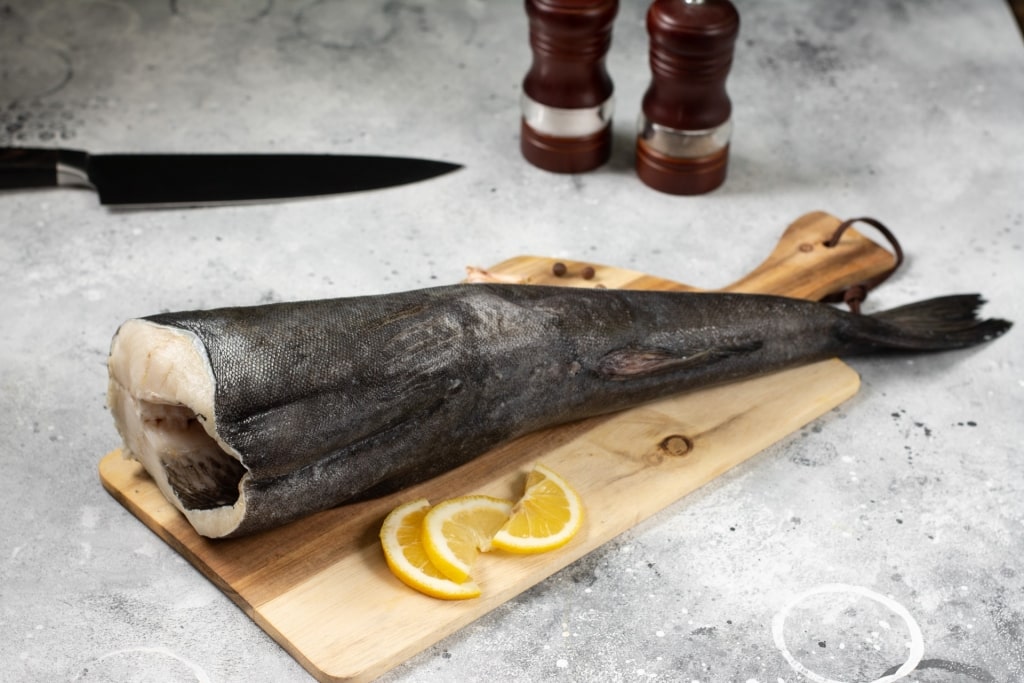
Black cod
Also known as Alaskan sablefish or butterfish, black cod is a highly coveted, often pricey delicacy—and with good reason.
The common name is somewhat misleading, since this prized fish bears no relation or resemblance to Atlantic cod. It has rich, firm-textured flesh yet, unlike mackerel and other fatty fish, has a surprisingly delicate flavor.
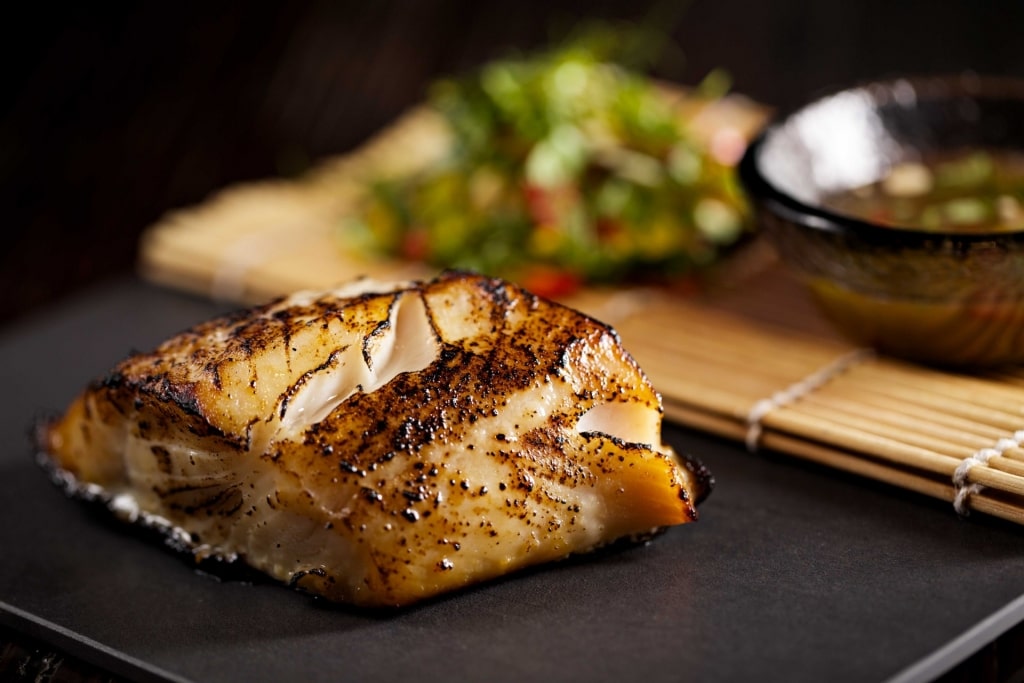
Black cod
Because of its high price per pound, wild Alaskan black cod tends to be reserved for starring roles and upscale restaurants. Miso-glazed black cod is a particularly iconic dish, since the fish has enough character to stand up to umami-rich seasonings.
For travelers looking for heart-healthy dining options, it doesn’t get better than Alaskan black cod. These oily fish have more beneficial omega-3 fatty acids even than wild Alaskan salmon.
Thanks to its high fat content, this fish also cures or smokes particularly well. A few thin slices of smoked sablefish piled on a bagel with capers and cream cheese is perfection.
Rockfish
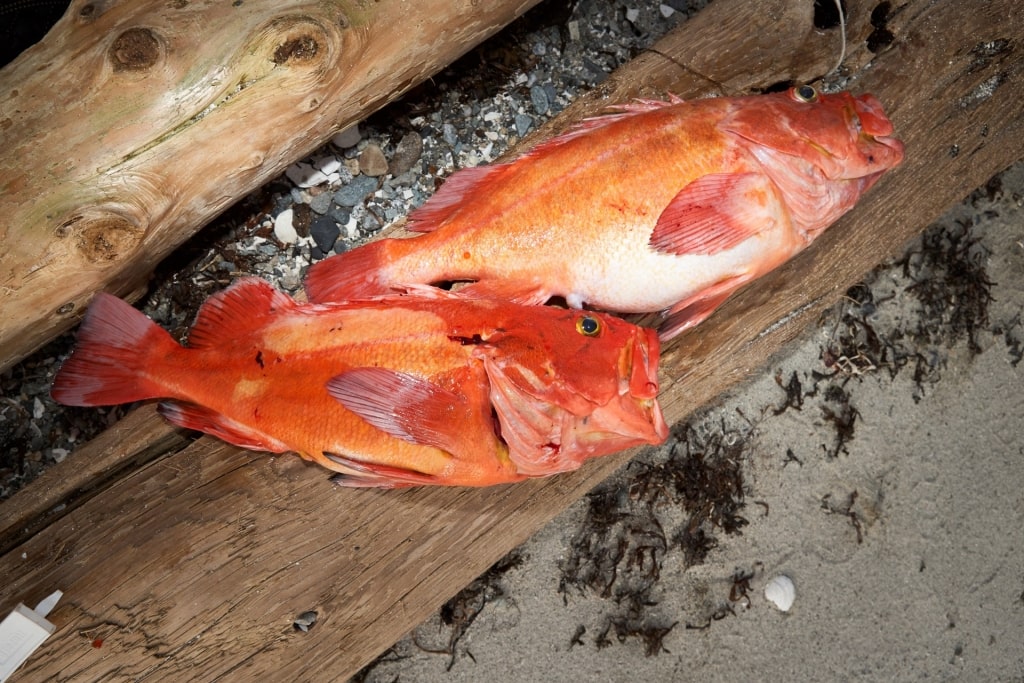
Rockfish
Seldom seen in the rest of the United States, Pacific rockfish (also known as Pacific snapper) is abundant in Alaskan waters. It’s also a real treat, with a mild flavor and flaky texture sure to win over even diners who don’t usually love fish.
Substantial enough to stand up to bold, spicy sauces and all manner of preparations, rockfish is a darling of Alaskan chefs. Expect to see it glazed with miso, sautéed with butter and lemon, or fried to a crisp and served up with a mountain of fries at restaurants all over the state.
As with many wild Alaskan species, rockfish has the added bonus of being a sustainable seafood choice. The National Oceanic and Atmospheric Association keeps close tabs on Alaskan rockfish and ranks them as one of the most responsible choices to put on your plate.
Scallops
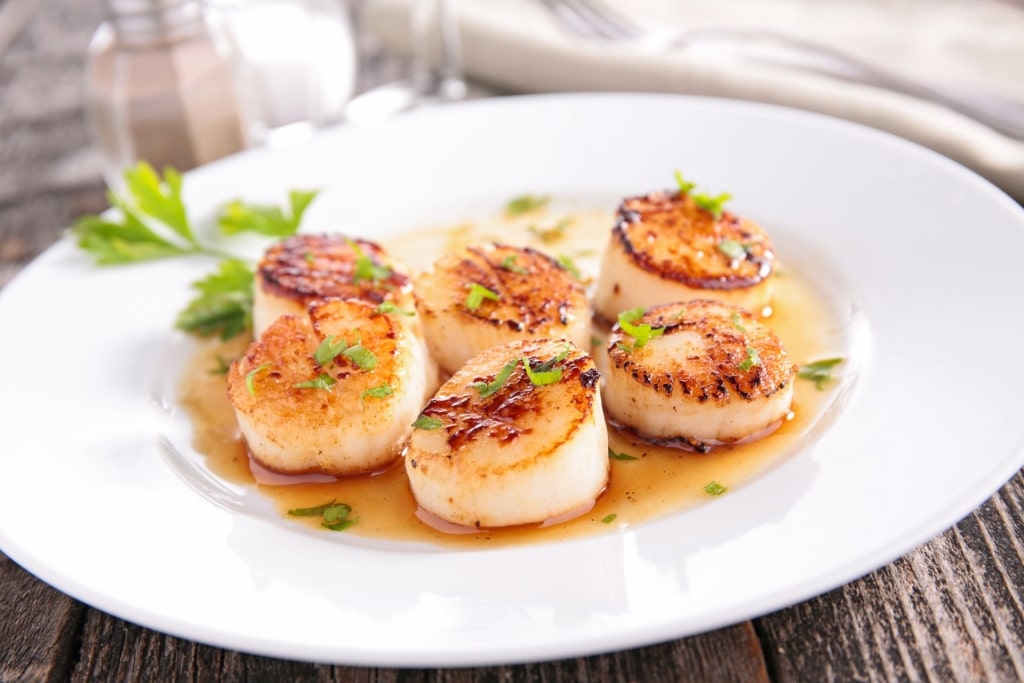
Scallops
Most travelers have, at some point, ordered scallops at a restaurant and been disappointed. Perhaps they seemed waterlogged, with an odd chemical aftertaste—a tell-tale sign of “wet-packed” scallops loaded with preservatives for an extra-long shelf-life.
Or perhaps they weren’t even scallops at all, since less-than-scrupulous seafood purveyors have historically tried to pass off chunks of cheaper whitefish as these coveted shellfish.
Whatever your disappointing memories of scallops may be, set them aside when you travel to Alaska. This is one of the only places that harvests Weathervane scallops, the largest scallops in the world by diameter.
To put that in perspective, Weathervane scallops can be up to 10 times the size of diminutive bay scallops found elsewhere.
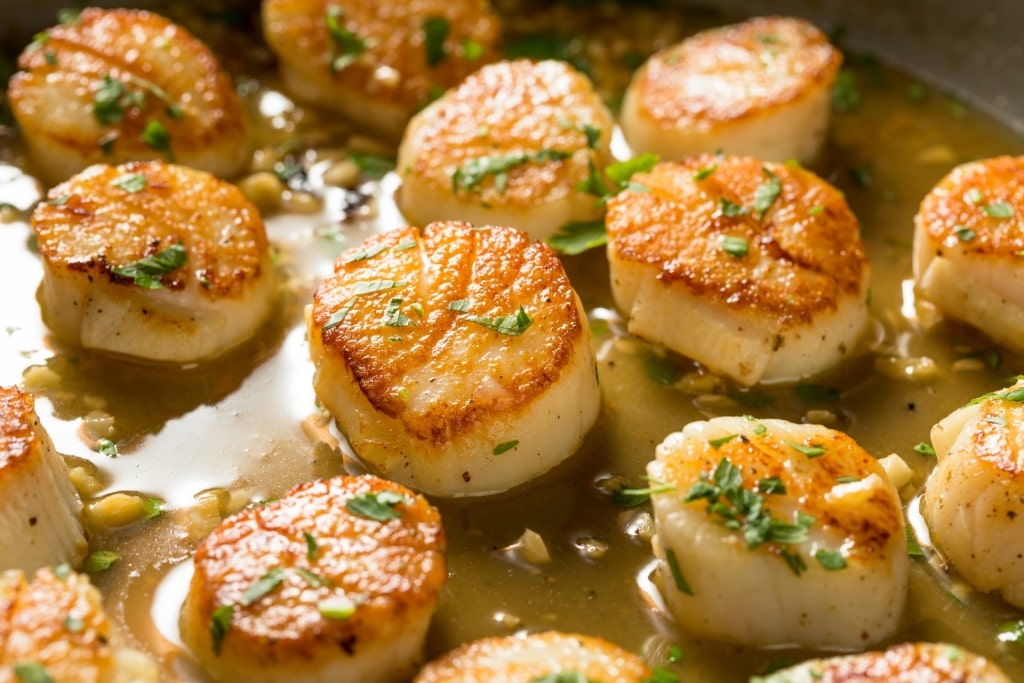
Scallops
Not only are these bivalves some of the biggest, but they also happen to have some of the sweetest meat. They take well to all sorts of preparations, but truly shine when seared in butter to a burnished brown, perhaps kissed by a light pan sauce of lemon and capers.
Thanks to careful management by the Alaska Scallop Fishery Management Plan, they’re also considered a sustainable seafood choice.
Fresh Oysters
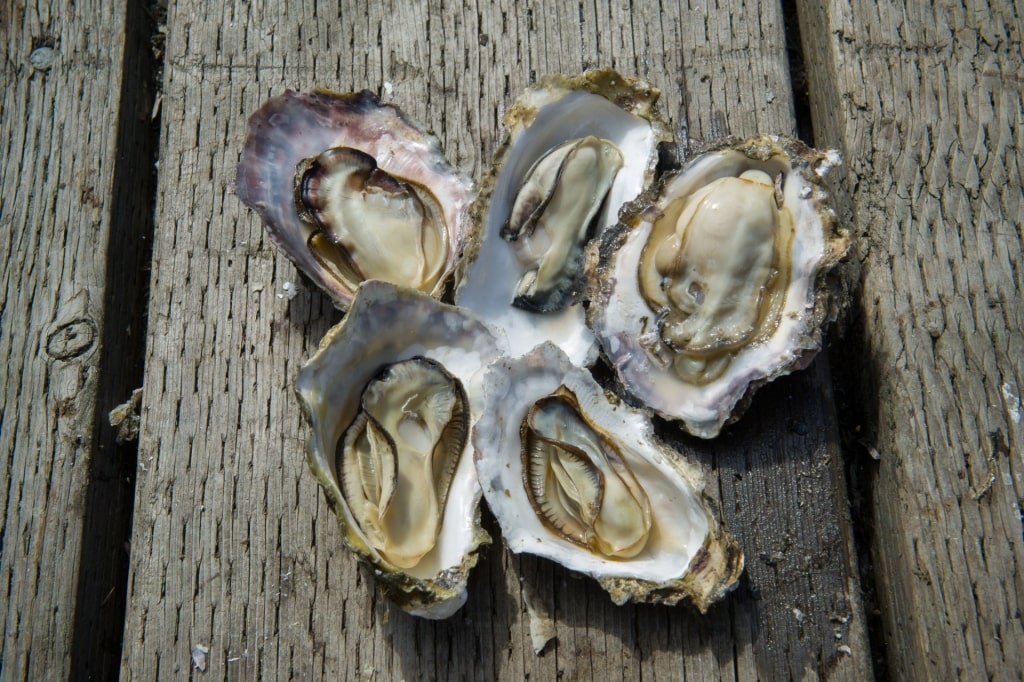
Fresh oysters
Oysters aren’t native to Alaskan waters, but thrive particularly well in tiered nets suspended above the sandy ocean floor here. Since these bivalves never touch the ground, you won’t find any pesky particles of grit—or, for that matter, pearls—in them.
The cold, clean waters make for pristine-tasting oysters, best slurped down raw with a squeeze of citrus and a glass of chilled Champagne. You can sample Alaskan oysters yourself at Hump Island Oyster Farm, near Ketchikan.
Lingcod
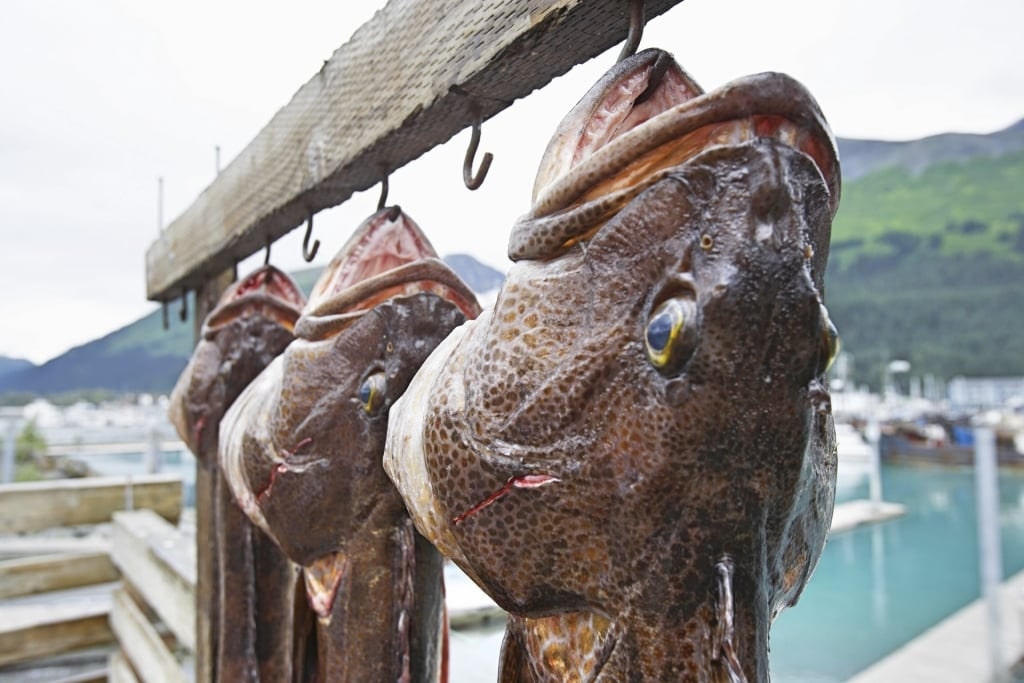
Lingcod
Despite what the name implies, these fish have absolutely nothing to do with the better-known Atlantic or Pacific cod. In the ocean, these powerful, predatory greenlings can grow up to 80 pounds and scarf down everything from rockfish to whole salmon.
Once cooked, the firm, white flesh does taste a little bit like a cross between halibut and cod. It’s often served sautéed, although it’s terrific in all sorts of Alaskan dishes.
For local fishing enthusiasts in Alaska, lingcod is often an especially prized catch. It helps that the large fish make for impressive trophy photos. As with many species in Alaska, lingcod is carefully and responsibly managed, meaning that the local populations have remained healthy after all these years.
Spot Prawns
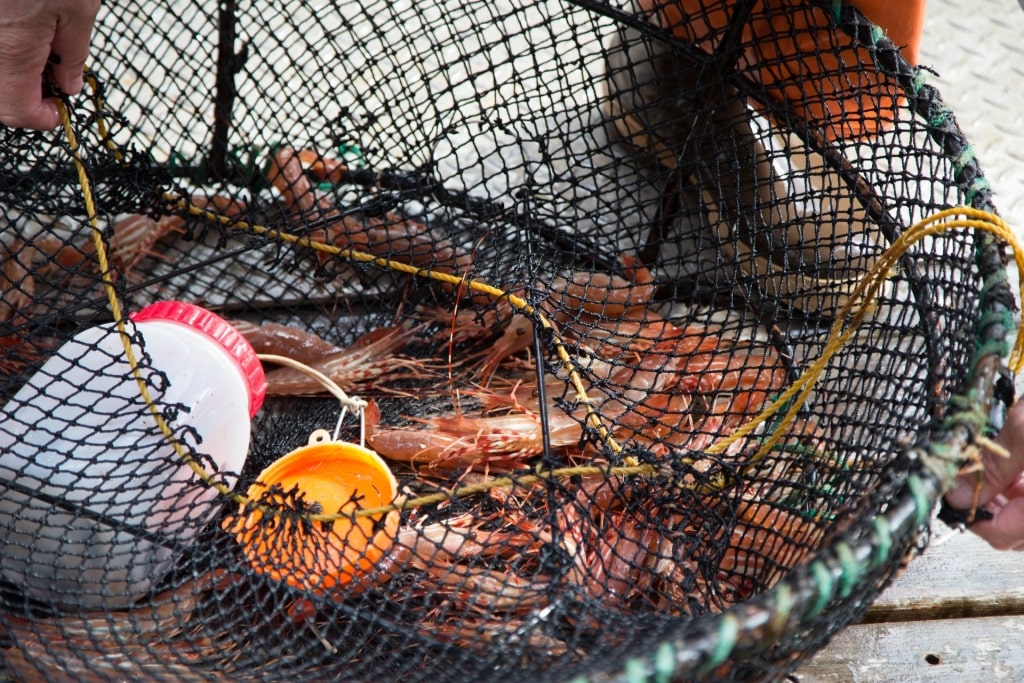
Spot prawns
Wild Alaskan spot prawns, sometimes simply called Alaskan prawns, are to the farm-raised shrimp in the average grocery store what a Wagyu ribeye is to a fast-food burger. At their largest, these colossal prawns can grow to be more than 12 inches long.
Locals often call them the “lobster of Alaska,” which feels like an apt comparison here. Technically speaking, spot prawns are biologically shrimp, not prawns, but they are referred to as such because of their impressive size.
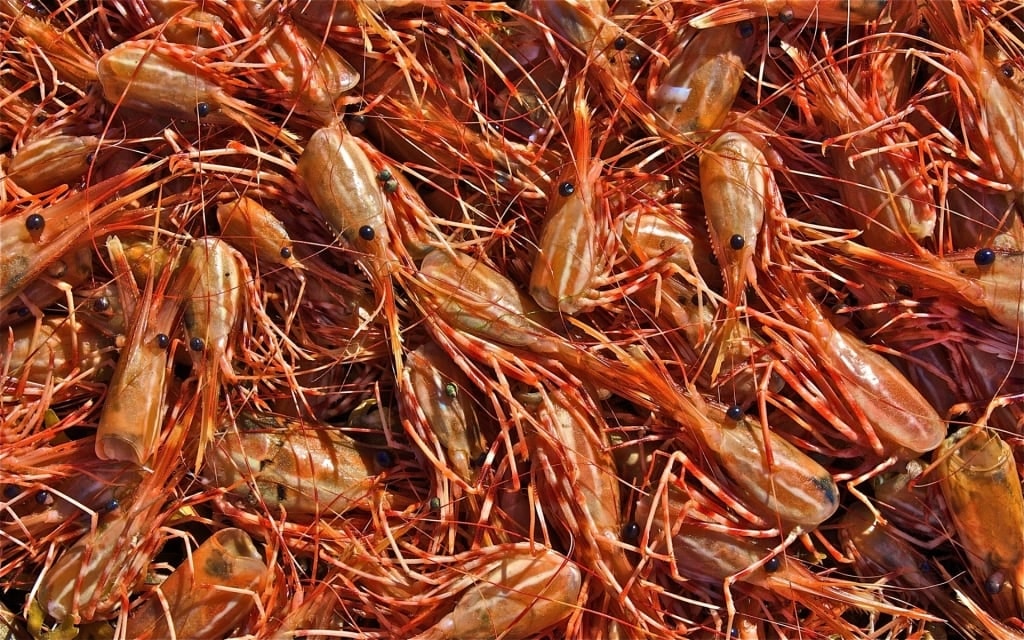
Spot prawns
Unlike mass-produced commercial shrimp, which often serve as little more than bland vehicles for seasonings, spot prawns have a sweet, utterly addictive flavor that needs little adornment. They are phenomenal served raw as sashimi, although many chefs around Alaska also love to grill or sautée them.
Wild spot prawns are also a more ethical seafood choice than their farmed counterparts. Much like Maine’s celebrated lobster industry, fishermen here used baited traps to catch spot prawns rather than trawl nets, which damage the ocean floor and harm other species in the process.
Alaskan Pollock
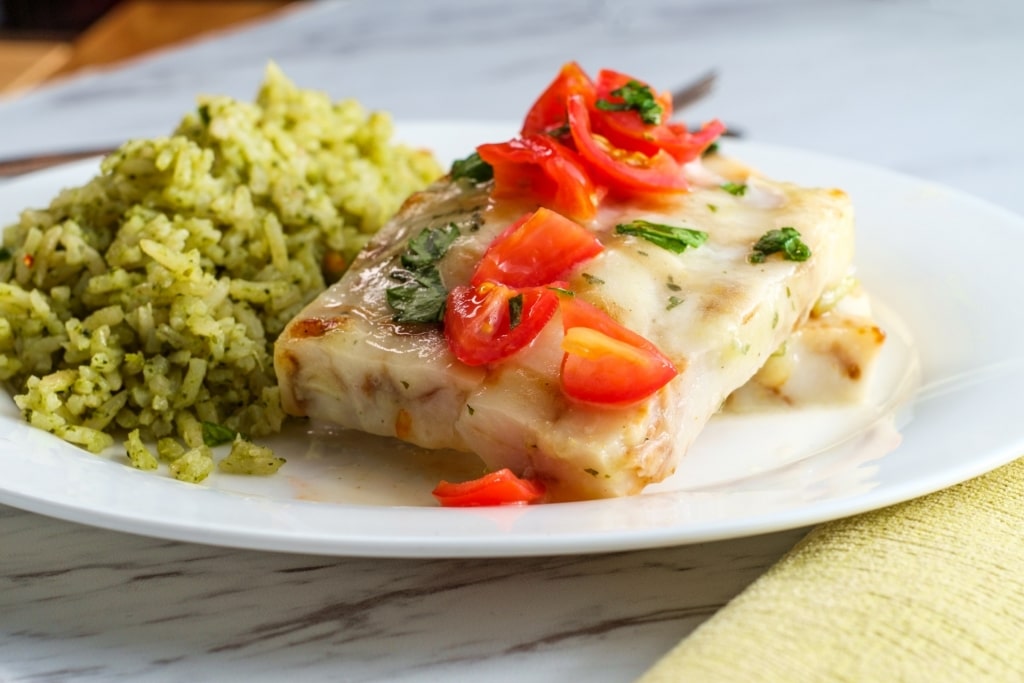
Alaskan pollock
It may not be nearly as famous as wild Alaskan salmon, the Alaskan pollock is one of the most widely consumed fish.
That’s because this mild-flavored, flaky white fish is the primary ingredient in surimi seafood, also known as the imitation crab meat found in California rolls at sushi restaurants all over the United States.
Just because surimi seafood is an imitation product does not mean that it’s bad. This paste, which usually consists mostly of Alaskan pollock, with a small percentage of crab, shrimp, or other shellfish for flavoring, is perfectly nutritious and tasty in its own right.
Because wild Alaskan pollock supplies are plentiful and low in mercury and other contaminants, it’s a perfectly healthy, sustainable seafood option.
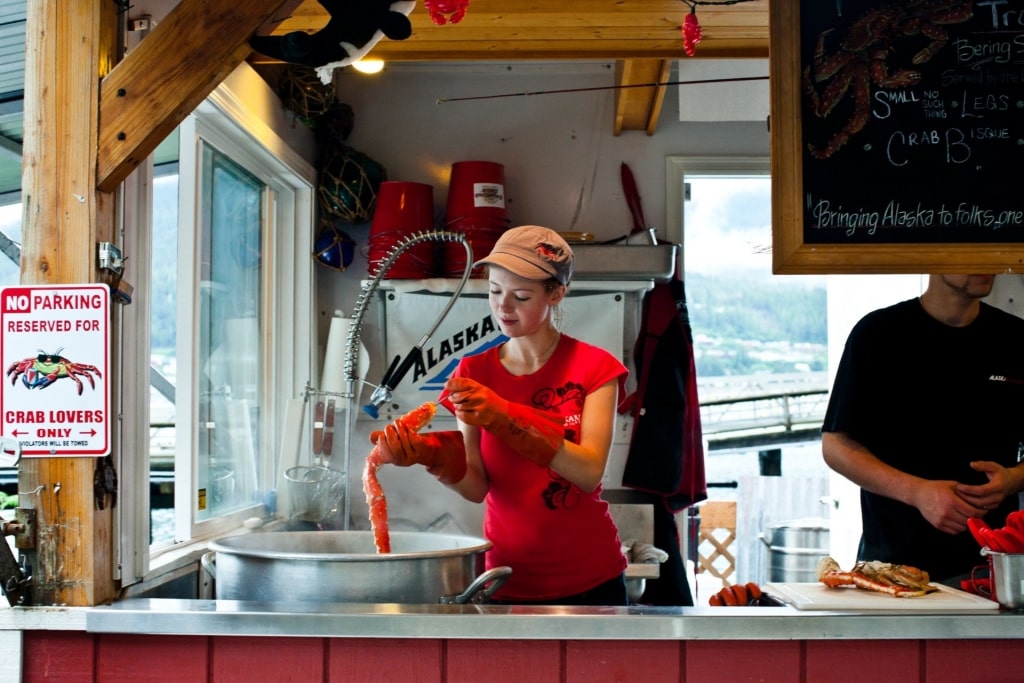
Tracy’s King Crab Shack, Juneau
Sample all sorts of delicious, sustainably caught seafood on a cruise around the Alaskan coastline. Browse our upcoming Alaska cruises and book your next culinary adventure today.
